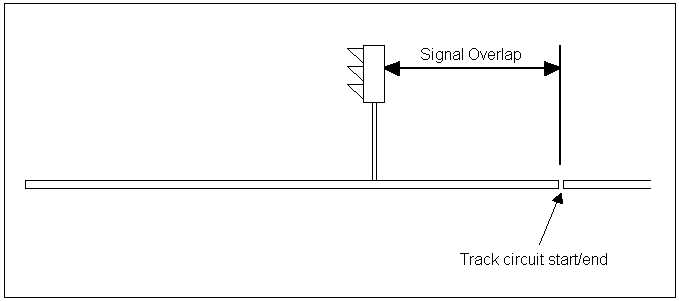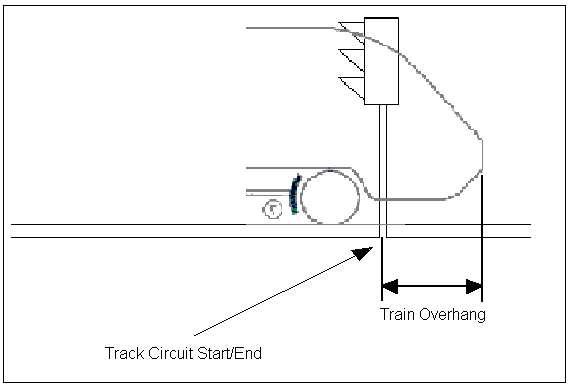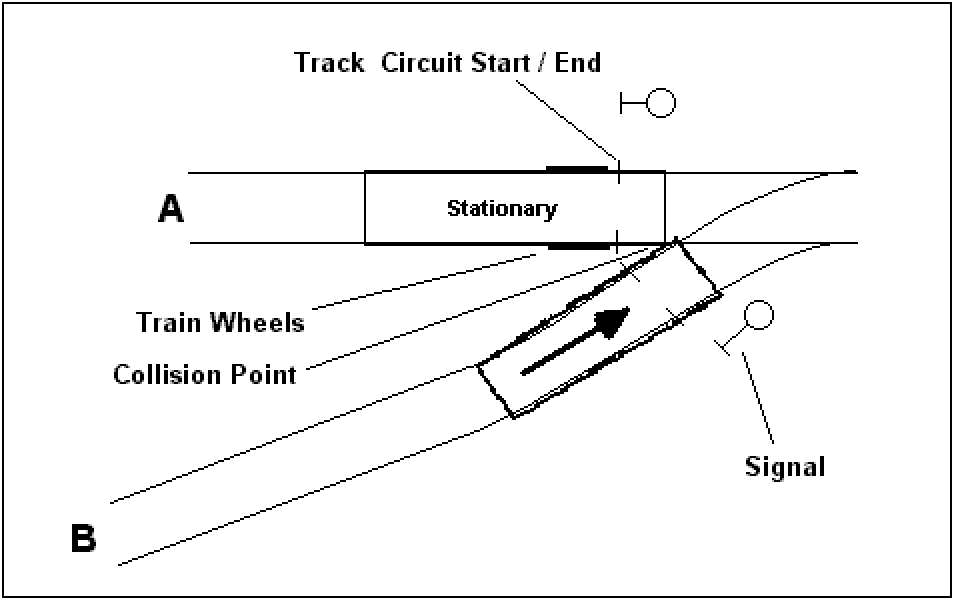This website has been archived from TrainWeb.org/railengineering to TrainWeb.US/railengineering.
|
Home
|
Clearance Analysis
Another project currently underway is route clearance of both the ECML and the WCML. This
incorporates train movements and minimum clearance distances. The kind of clearance being
analysed is signal overlap, centre throw / end throw and buffer locking. The aim of the
project is to identify areas where these circumstances may occur, and to see if the area
can be re-designed or slued. The above circumstances can cause train collisions.
Signal Overlap
Track circuits are used on the railway network to monitor train positions. A train completes
a low voltage circuit so that the signaller knows the position of the train. These track
circuits are placed in accordance with signals, but signal overlap is usually incorporated.
Signal overlap can be best described as a region of safety in the event of a SPAD. That is,
the track circuit aligned with a relevant signal, starts/ends after the signal. The following
diagram best illustrates this.
In the worst case, the track circuit can be adjacent to the signal, therefore creating no
signal overlap. This can create a problem, since a train stopping at a red aspect will have
its wheels just before the start of the next track circuit. This may leave the nose cone of
the train protruding over the next track circuit. Although this would not cause a signalling
overrun, it may be in risk of collision from other traction. Fig. XXXX highlights this.
This is of particular interest where a turnout may exist.
Curve Analysis
I was also introduced to the ECML curve analysis study. This is a study on all curves
between London Kings Cross and Edinburgh. The idea for undertaking this study is to
determine where line speeds can be increased and to also identify curves on the ECML which
are non complient.
Since the study is already underway, I was shown some results of the curve analyses. In some
places along the line, curves exceed their maximum cant.
As a result of finding this, either the track or the line speed will have to be changed.
But what information is used to analyse every curve on the ECML? Data from the High Speed
Track Recording Coach (HSTRC)2 is used as well as old versine design drawings. The old design
drawings can offer a basic idea to the track, but over time track does move. The HSTRC
printouts can verify as to how much the track as moved. This is because the printouts are a
lot more recent than the design drawings.
Another reason for analysing the route is to ensure that all relevant curves are lubricated.
Since some of the curves are not at the radius they were designed, lubrication may be needed,
especially if the radius had decreased. The TDM states that all track with a radius of
between 500m and 200m has to be lubricated. There are no curves less than 500m radius
So apart from realising where rail lubrication might be needed, and looking for cant
exceedencies, what is the point in trying to increase line speed?
It may seem pointless in increasing the line speed by 5 mph over a one mile section as this
would reduce the journey time by only a couple of seconds. However, if this were to be done
at every possible section for the entire ECML, then maybe 15 minutes would be taken off a
journey time between Scotland and London. This is very desirable, by both the TOCs and
Railtrack. But is it economically justifiable in carrying out this study. Corus are being
paid to conduct the study, and if it is successful, the journey between Edinburgh and London
can be reduced. If shorter journey times are a result of the study, would this not mean that
trains would run to a tighter schedule? That is, for example, stopping at one red aspect
would delay the train behind. Compensation would have to be paid, and since it is a TOC on
TOC delay, Railtrack would be liable for the compenstion.
|

















